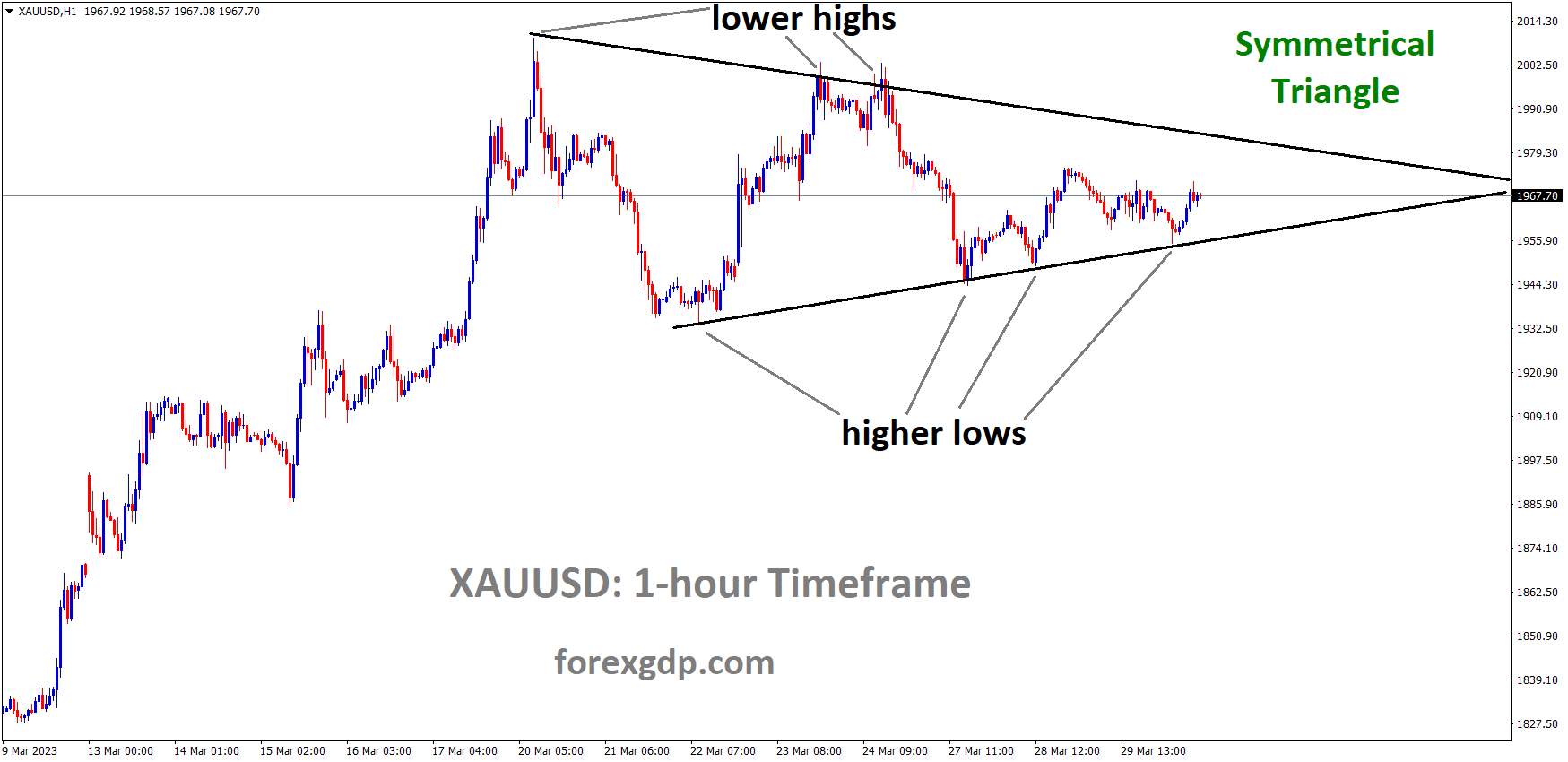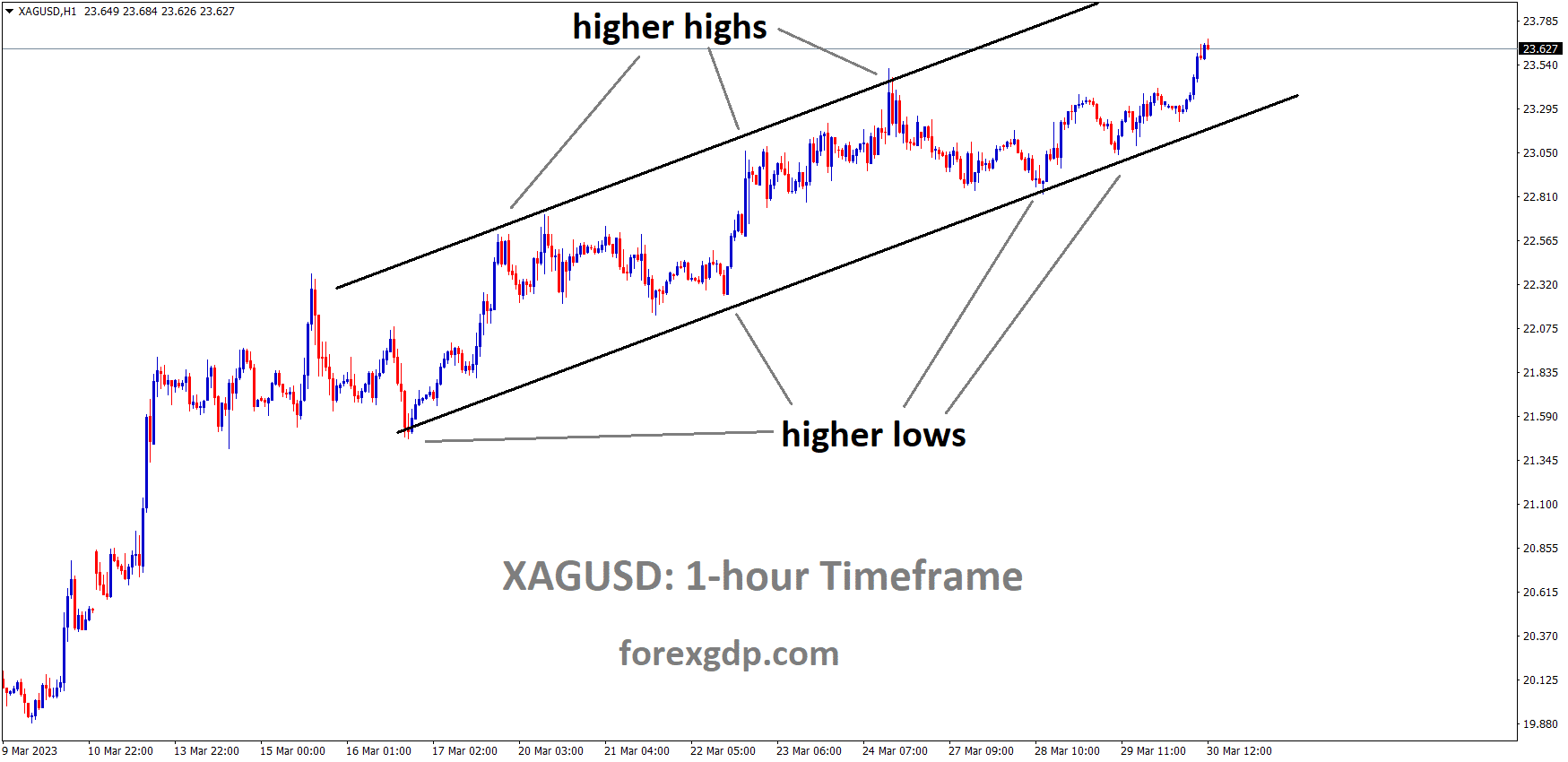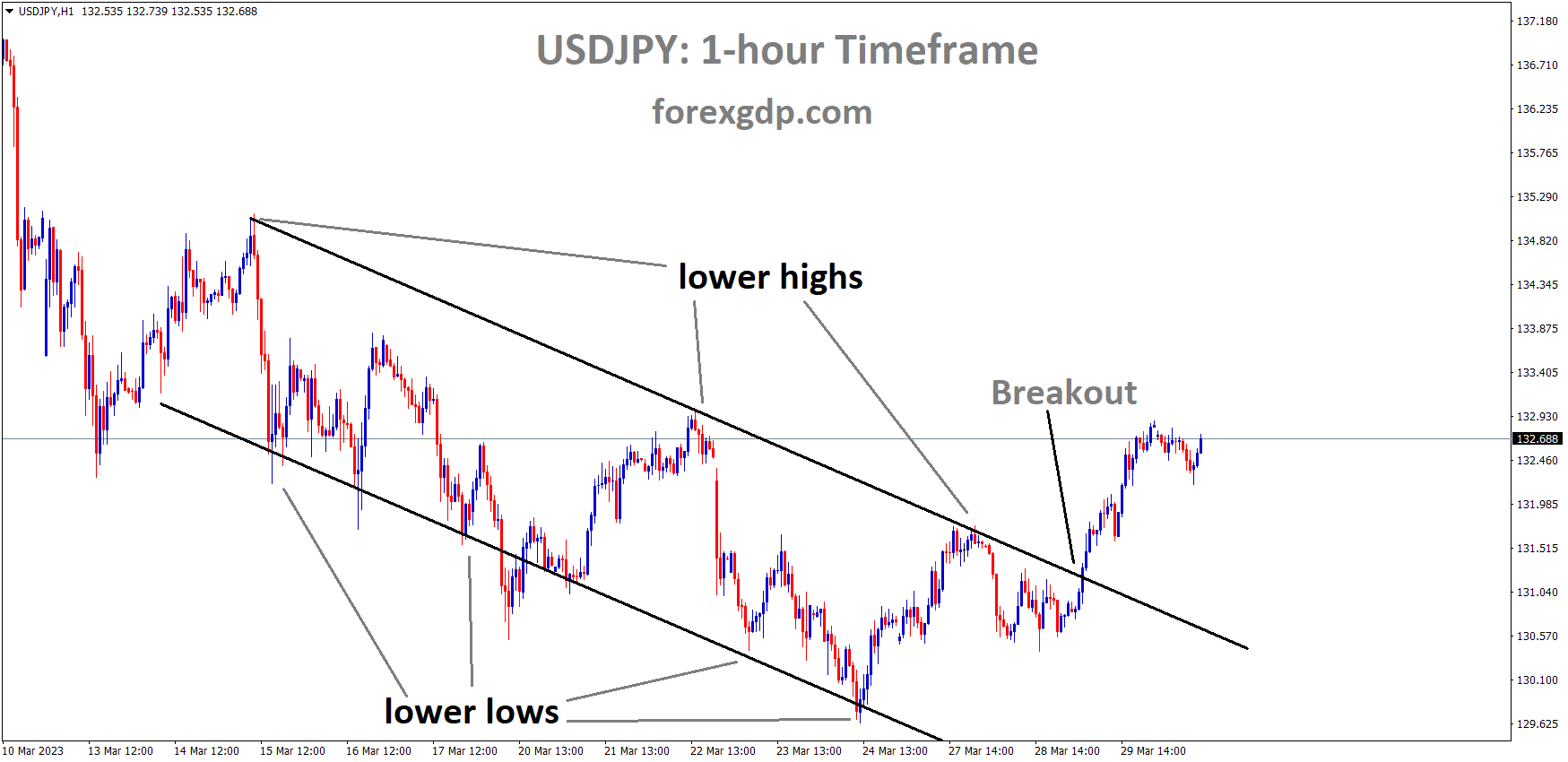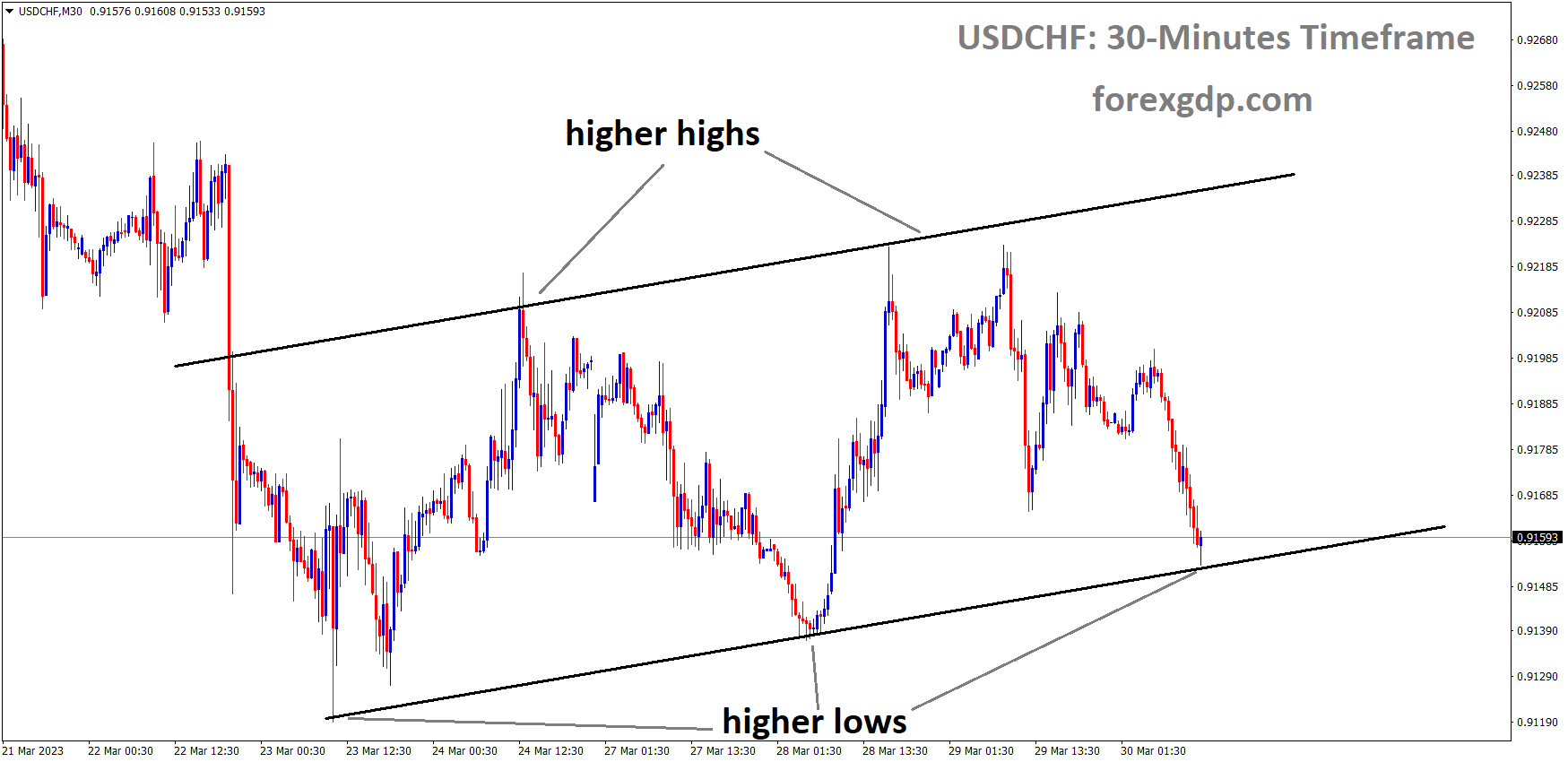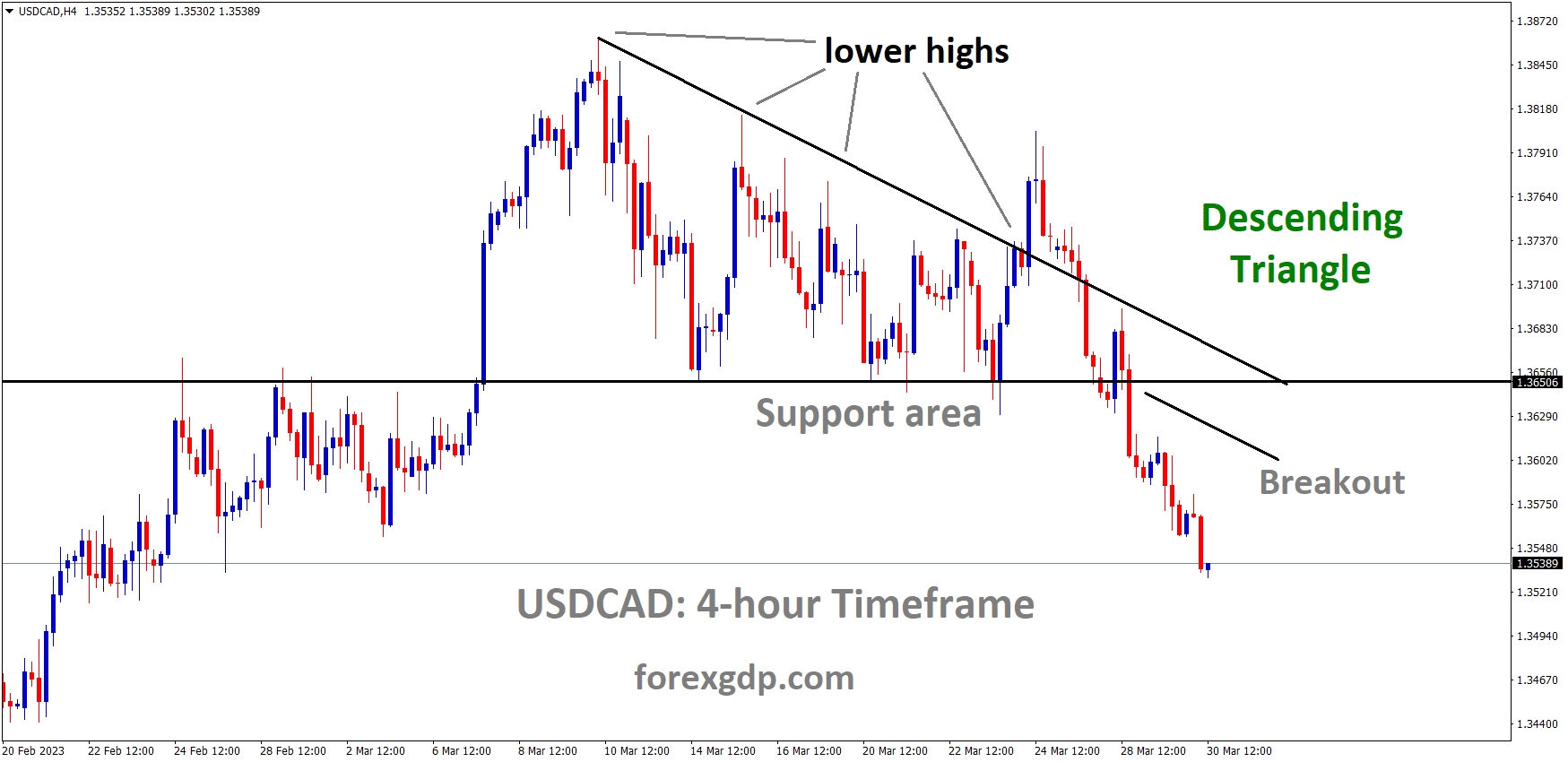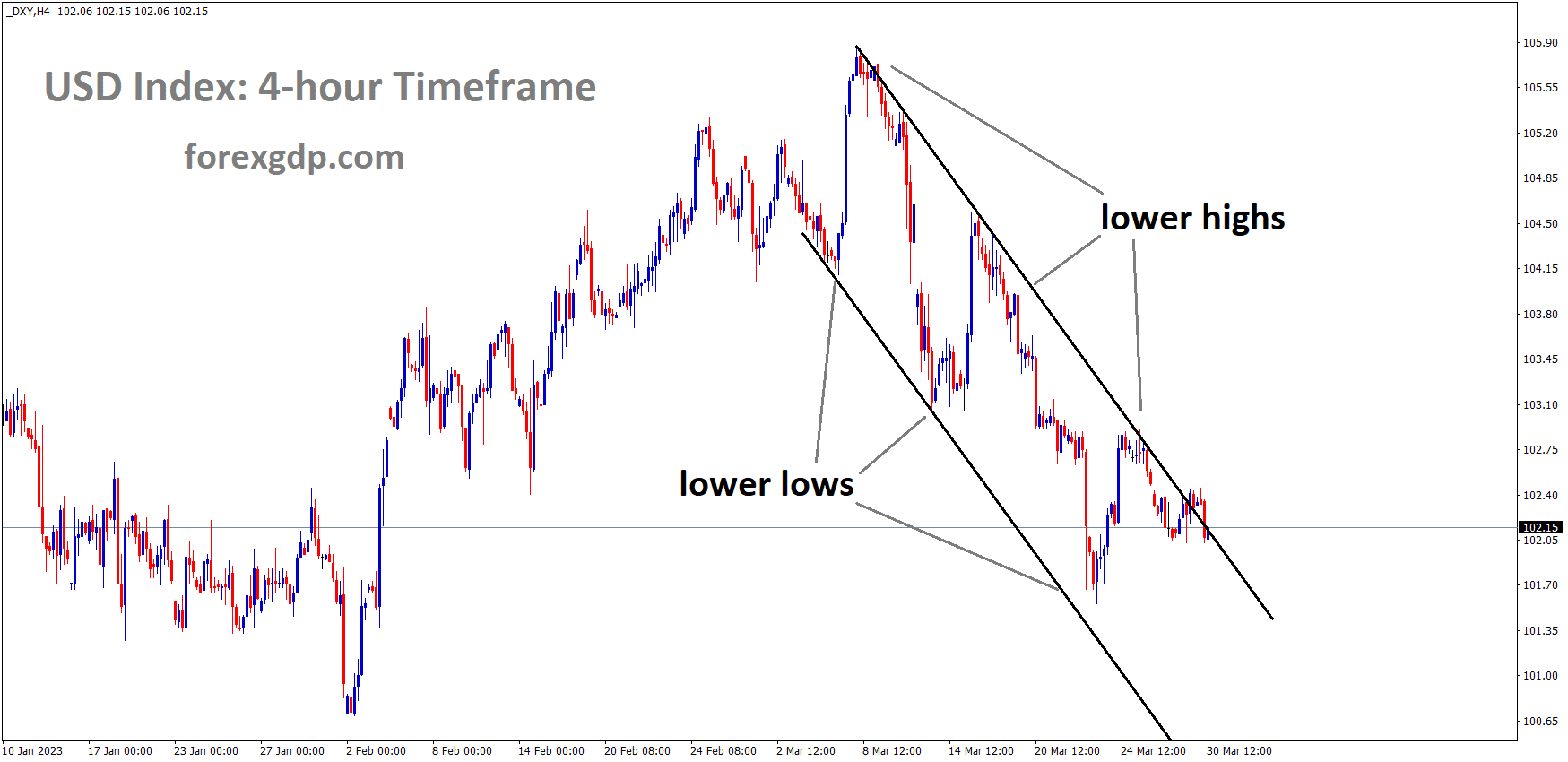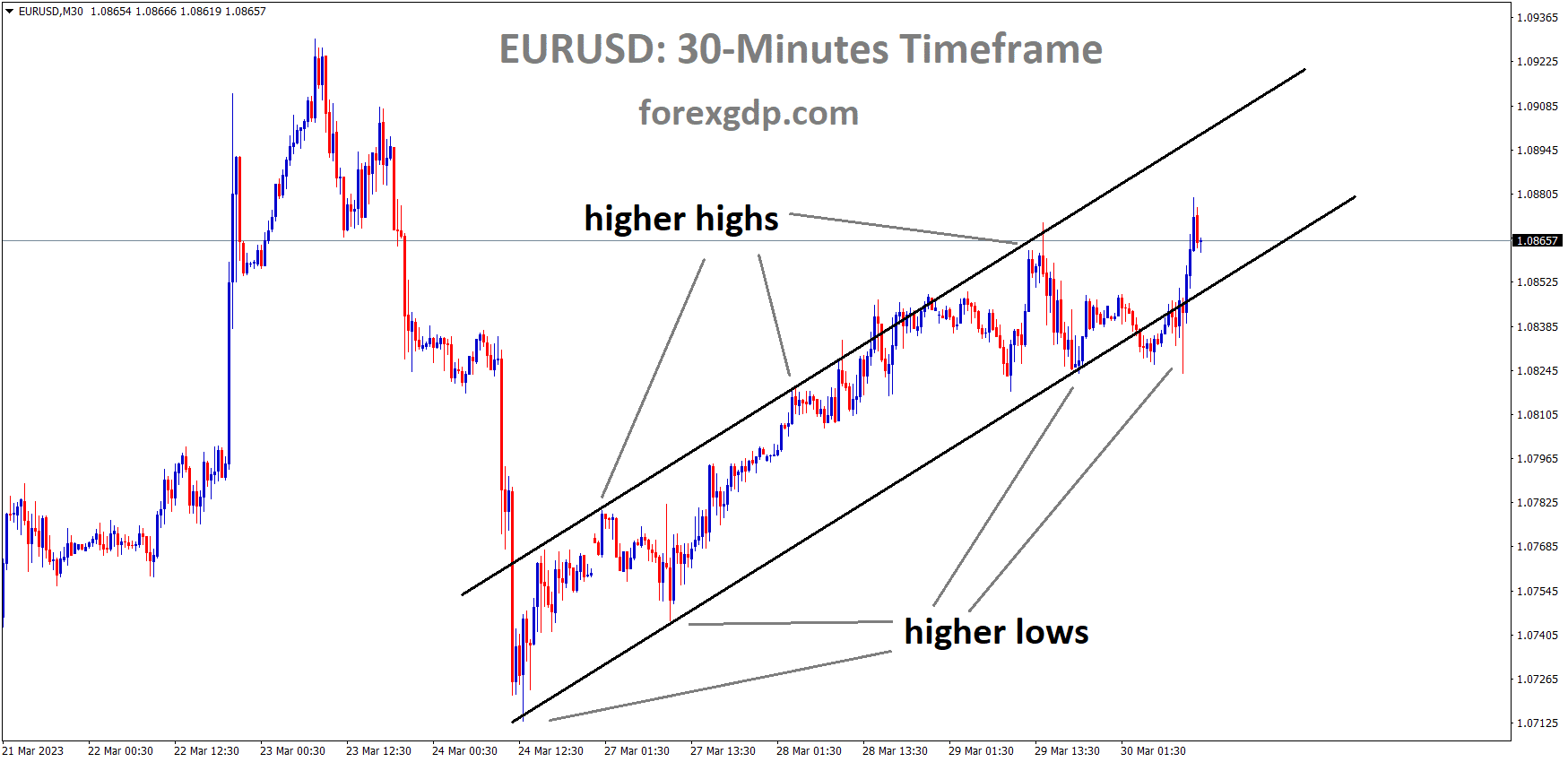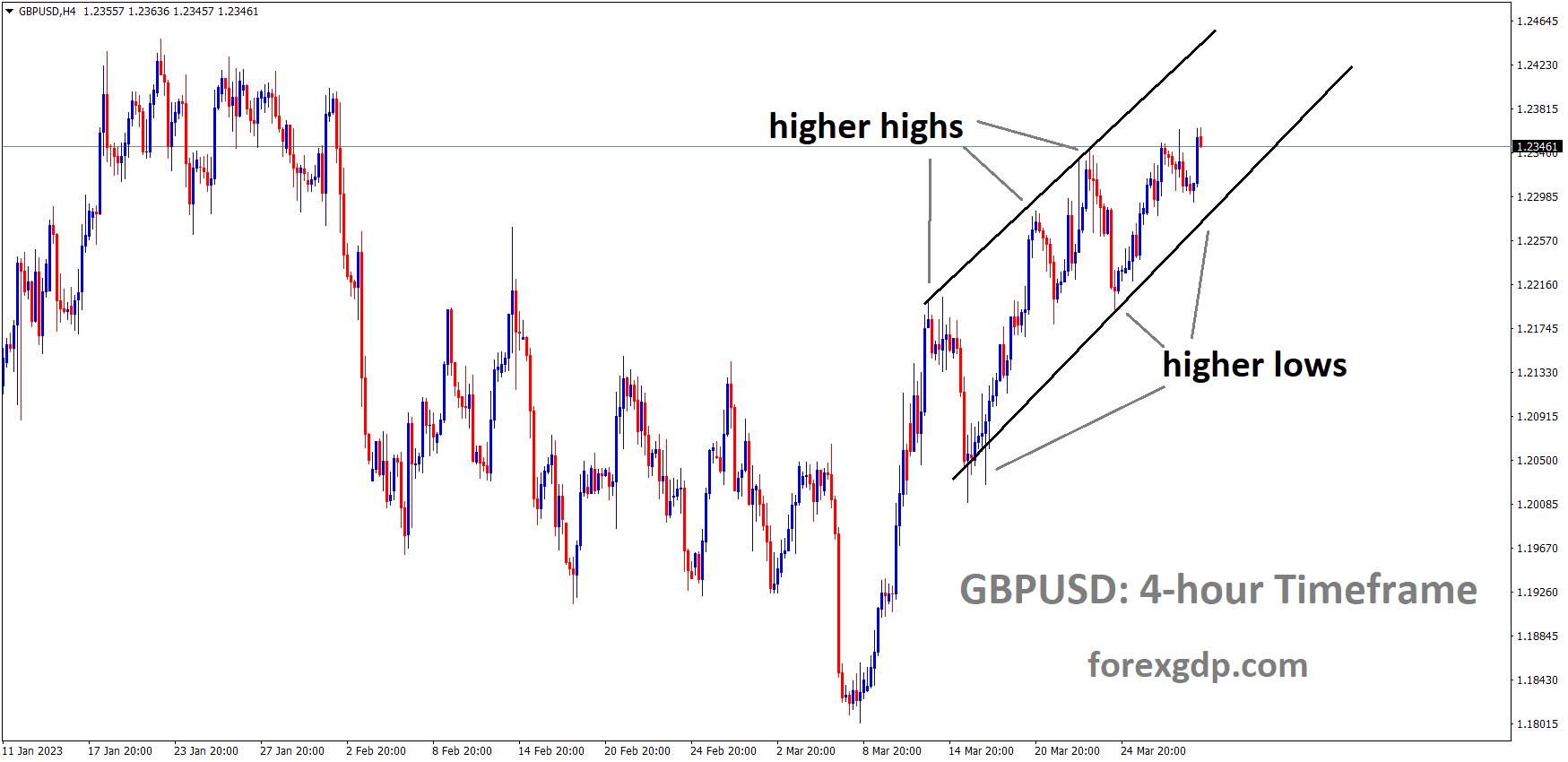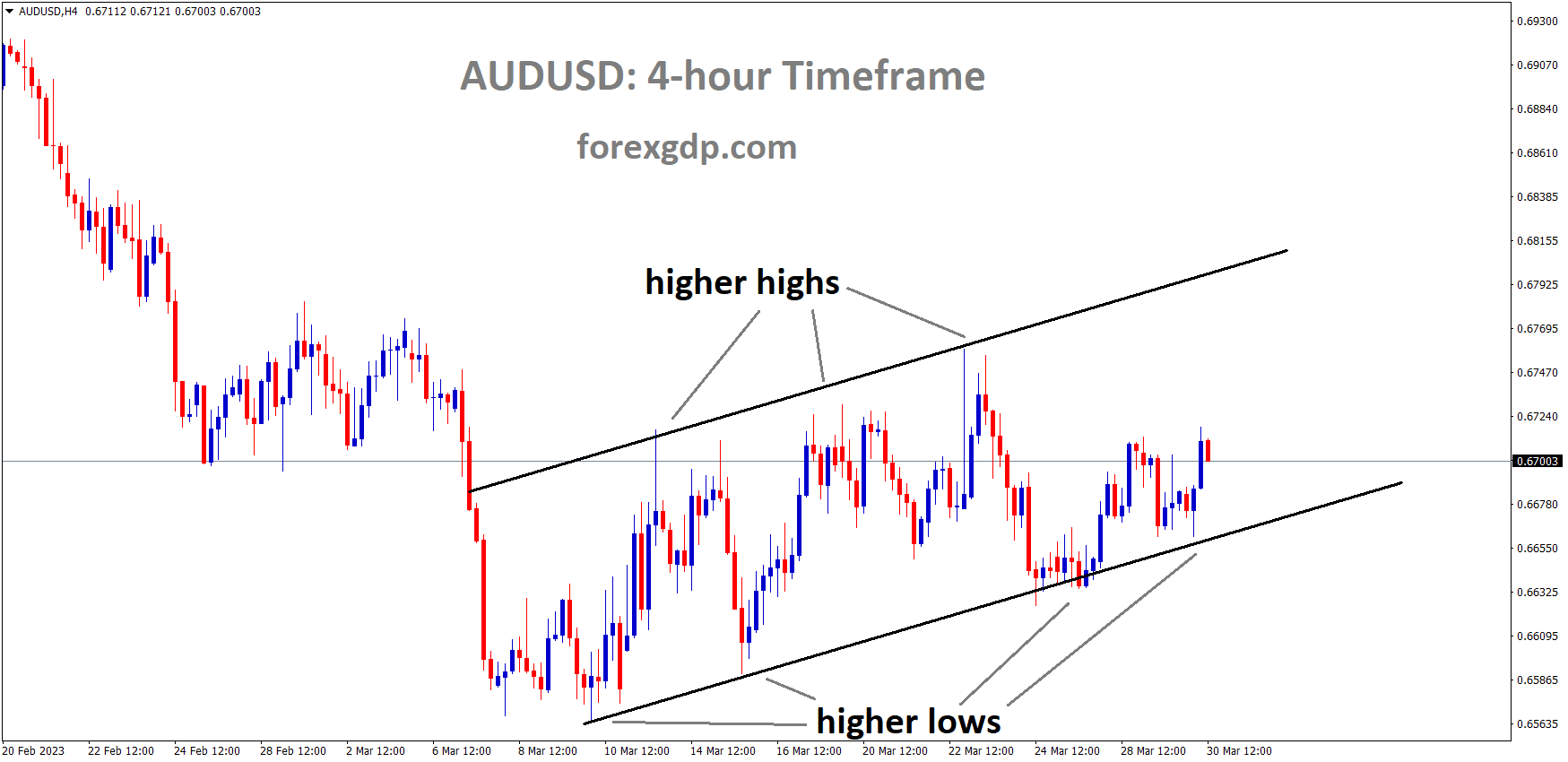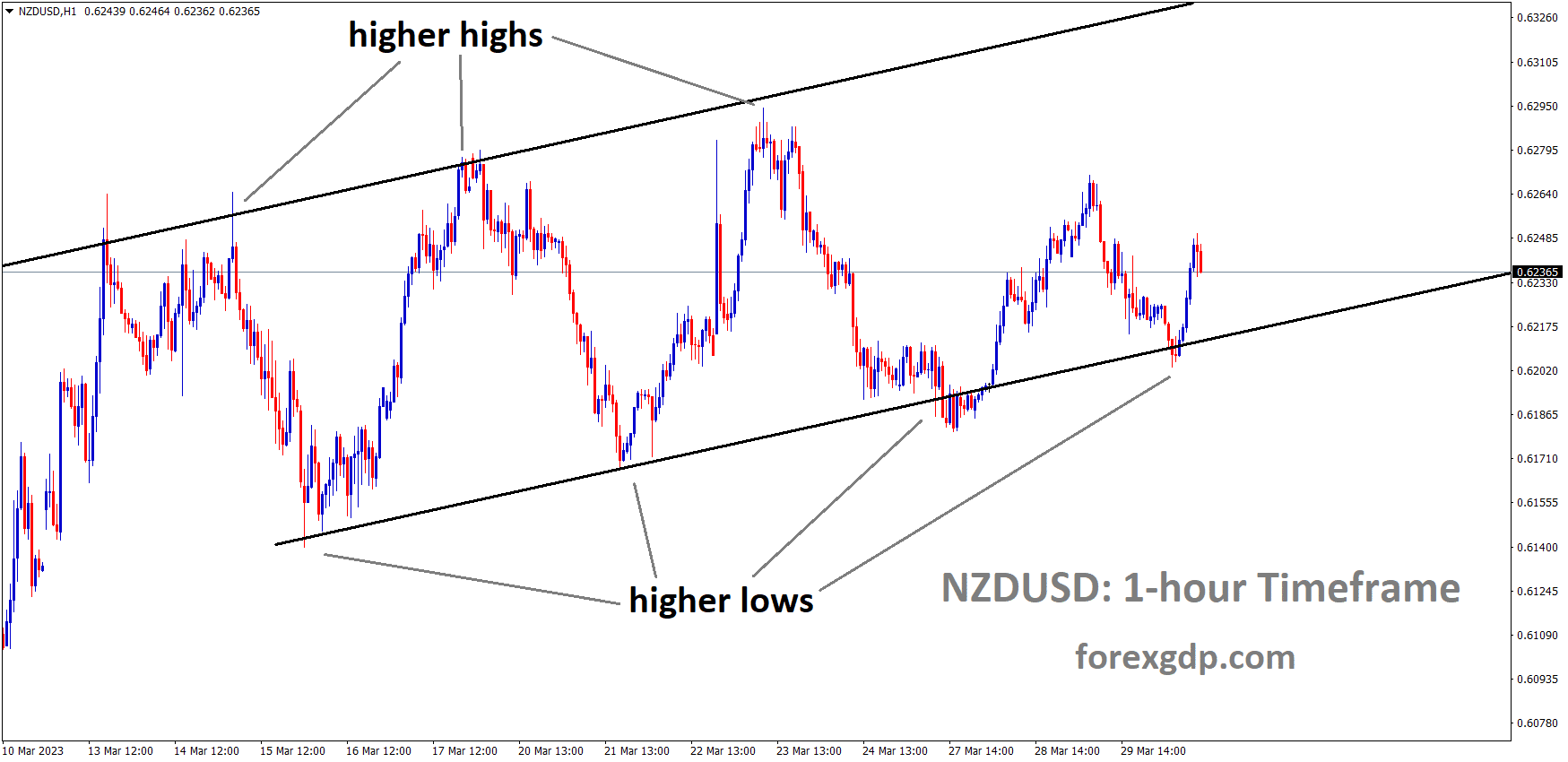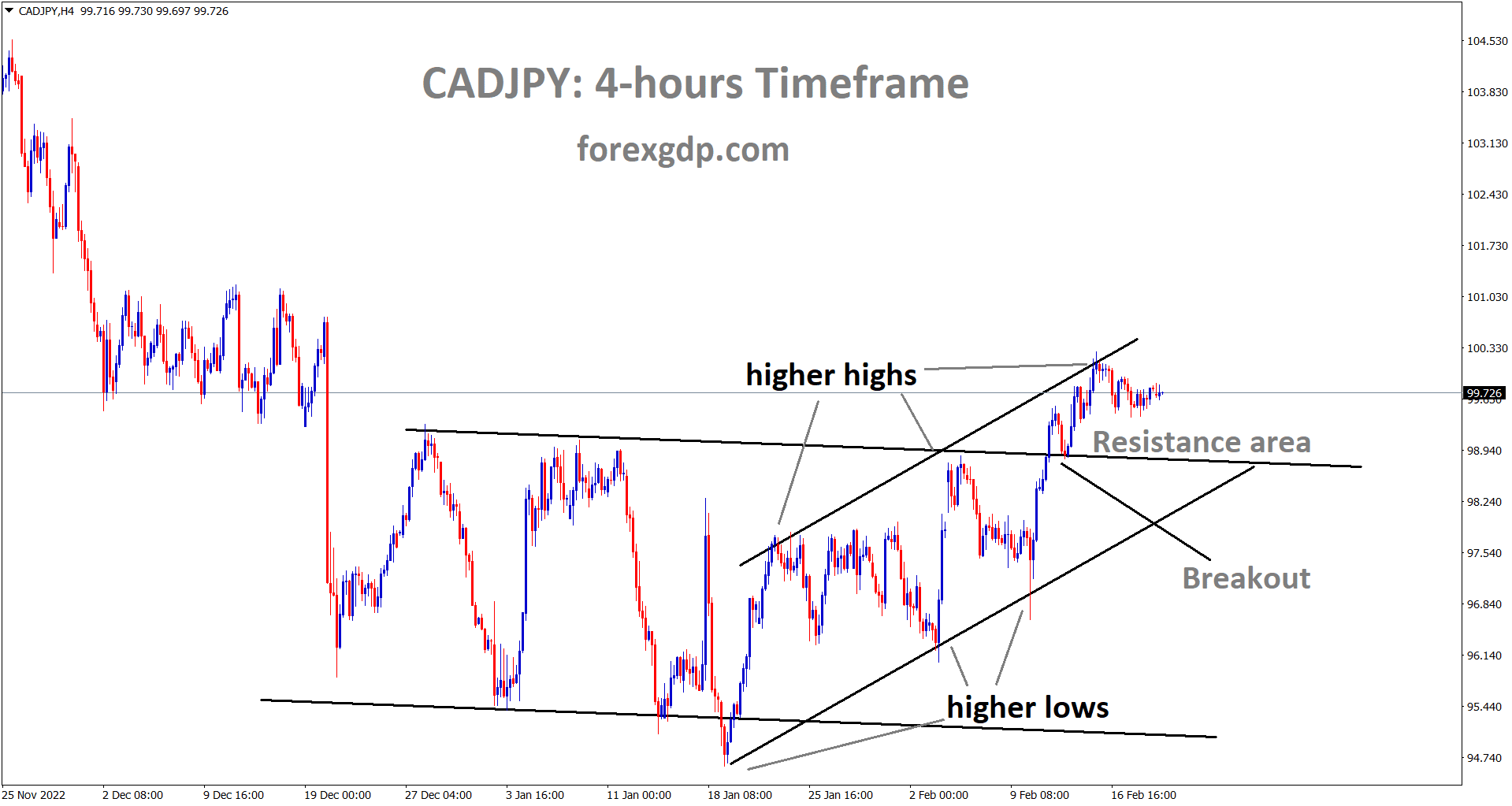GOLD Analysis
XAUUSD Gold price is moving in the Symmetrical triangle pattern and the market has rebounded from the bottom area of the pattern.
The bank sector’s reduced appetite for risk helps the US economy but does little to help the US dollar. The FED’s action to cool down the banking sector resulted in a small decline in the price of yellow metal. Higher numbers in today’s US GDP report, which is planned, will strengthen the greenback relative to gold, reversing a recent decline.
After the US Dollar managed to regain trust, driving risk assets higher, gold prices are currently trading lower. Safe havens fell, pushing valuable metals lower as the US Dollar recovered some of its recent losses. The stability of the US financial system is still unknown, despite the appearance that concerns about banking sector contagion have subsided. Gold futures, however, pulled back after a brief retest of $2,000, dropping below the February peak, which now serves as resistance at $1,975.2.
Technical levels have served as an extra catalyst for price action in addition to a number of high-impact economic data releases that have increased risk-appetite.
SILVER Analysis
XAGUSD is moving in an Ascending channel and the market has rebounded from the higher low area of the channel.
Global nations must assist those with greater debt burdens and food crises, according to Kristina Georgia, managing director of the International Monetary Fund. Members of the global community should assist those nations in need and share resources with those with higher debt loads.
IMF Forecasted global trade fragmentation is currently at 7% of the global GDP. Both creditors and debtors will gain more from this activity at this moment. More struggling businesses and food crises in their nations will be the focus of government fiscal policies. Fears of a banking crisis are allayed by these IMF remarks. We urgently need quicker, more effective mechanisms for giving debt support to vulnerable nations, International Monetary Fund Managing Director Kristalina Georgieva stated on Thursday. Stronger nations ought to support the world’s most defenceless citizens, especially those who are struggling with debt. Both creditors and debtors would profit greatly from the establishment of such mechanisms. The global image would become less uncertain if success were to be achieved.
Welcome China’s involvement in the new global roundtable on sovereign debt and membership in a common framework. Cooperation between nations is necessary to diversify supply chains based on sound economic principles and to reenergize global commerce in an equitable manner. Runaway disintegration would have the worst effects on Asia. According to IMF research, trade fragmentation can cost up to 7% of the world’s GDP over the long run. Those most in need or most impacted by food insecurity and the expense of living crisis should receive targeted assistance from governments as a result of their fiscal policies.
USDJPY Analysis
USDJPY has broken the Descending channel in upside.
The new governor of the Bank of Japan, Ueda, has assumed his position but is not fully in control until former governor Kuroda takes over on April 8. BoJ maintains the interest rate at -0.10% and the yield on 10-year JGB notes at -/-0.50% and Zero, respectively. Any modification to the YCC made by the new governor will result in a loss for Mark’s returns on JGB Holdings.
Therefore, Japanese officials exercise greater restraint and wait for the economy to stabilise before raising the YCC band rate. The US Dollar gained against most currencies overnight, but it was more evident against the Japanese Yen, which fell overnight. Going into the New York close, the USDJPY reached a high of 132.89, just missing last week record of 133.00. The Asian period has seen a slight easing of it so far. Japan’s fiscal year ends at the end of March. Potential movements from this accounting event have been blamed for some of the currency’s recent weakness. This week, risk appetite has increased as a result of the financial sector’s issues appearing to be resolved. The Yen’s reputation as a secure haven currency may have hurt it in this most recent transaction.
Treasury yields recovered from the selloff that occurred when the SVB Financial collapse became evident, but have remained stable over the past 24 hours. According to reports, Jerome Powell, the chairman of the Federal Reserve, had a secret meeting with some Republicans yesterday. He referred to the dot plots from the most recent Federal Open Market Committee meeting when questioned about potential rate increases. The circles suggest that rates will rise again this year. The market is predicting a 50/50 possibility that the Fed will raise interest rates by 25 basis points at its next meeting in early May. In comparison, markets anticipate that the Bank of Japan will maintain its current ultra-loose monetary policy. The departing Governor Haruhiko Kuroda will continue in office until April 8th even though the incoming Governor Kazuo Ueda has assumed his position. The market does not anticipate any significant adjustments after this transition is finished. There are rumours that the incoming governor may try to subtly change directions at some point, perhaps near the end of this year.
With a policy rate of -0.10%, the BoJ is keeping control over the yield curve by aiming for a band of +/- 0.50% around zero for Japanese Government Bonds out to 10 years. The amount of JGBs the bank holds means that any rise in the YCC target band could result in sizable marked-to-market losses on the bonds the bank owns. In light of this, Treasury rates may have a greater impact on the USD/JPY than JGBs. In the near future, the US will see a wealth of significant data, such as GDP, employment data, and personal consumption figures. The primary personal consumption expenditure figure will be the main point of emphasis. The Fed prefers using this as a gauge of inflation, and it may offer insight into how rates will move forward.
USDCHF Analysis
USDCHF is moving in an Ascending channel and the market has reached the higher low area of the channel.
Thomas Jordan, the chairman of the SNB, stated in the SNB Quarterly Bulletin that a hike in future months will be necessary to maintain the stability of the Swiss Franc. Inflation reached 3.4% in February, with domestic goods being the major contributor to the increase. When the retail sales data is released on Friday, it is anticipated that they will increase by 1.9% rather than decrease by 2.2%. When these rates are charged, inflation pressures will rise. In the early Tokyo session, the USDCHF pair demonstrated a retracement move to near 0.9180. Selling pressure on the Swiss Franc asset has been fueled by the US Dollar Index’s gradual decline and increasing hopes that the Swiss National Bank will raise interest rates. The collapse of Credit Suisse kept the Swiss Franc on the back foot in recent sessions as the currency lost its allure as a secure haven. Hawkish SNB wagers appear to be trying to reclaim their former grandeur.
In order to maintain price stability in the Swiss area, SNB Chairman Thomas J. Jordan will increase rates further, according to the SNB Quarterly Bulletin, which was published on Wednesday. Inflation in Switzerland increased to 3.4% in February, according to the SNB Quarterly Bulletin, with domestic products accounting for the majority of the increase. Future Real Retail Sales statistics will be closely scrutinised. It is anticipated that the annual retail sales figures will increase by 1.9% against a contraction of 2.2%, which would further scale the inflationary pressures. The USD Index, meanwhile, has stagnated beneath 102.70. On Wednesday, the asset experienced a roller-coaster ride as expectations for a future drop in retail demand in the US grew stronger. According to Reuters, the National Retail Federation stated on Wednesday that concerns about a recession and tremors in the financial sector cast a shadow over a recovery in consumer spending. The NRF predicts retail demand will increase by 4-6%, which is less than the 7% rise seen in 2022.
USDCAD Analysis
USDCAD has broken the Descending triangle pattern in downside.
The deputy governor of the Bank of Canada, Toni Gravelle, stated that if a bank default happens, the Bank of Canada will increase liquidity and that we have sufficient funds to resolve the bank crisis. At the close of 2024 or in early 2025, quantitative tightening measures will come to an end. In markets that can sustain the Canadian Dollar against other currencies, oil prices are rising.
In the hours leading up to Thursday’s European session, USDCAD reverses from intraday while paring the first daily advances in four. In doing so, the Loonie pair gives credence to the Bank of Canada’s officials’ pessimism while also giving some attention to the weakening prices of WTI crude oil, Canada’s main export. The BOC is prepared to take action in the event of significant market duress and to support the financial system’s liquidity, according to Deputy Governor of the Bank of Canada Toni Gravelle on Wednesday. The policymaker further stated that the Quantitative Tightening program, which is effective but will take some time to complete its job, will probably come to an end sometime in the latter half of 2024 or the first half of 2025. However, Fed Vice Chair for Supervision Michael Barr emphasised the importance of data dependency while Fed Chair Jerome Powell teased one more rate increase, putting to the test the market’s prior optimism. The Fed Chair Powell’s campaign to change deposit protection may be on the same track. Since the US will release its most important inflation indicator on Friday, the Core Personal Consumption Expenditure Price Index, the Fed’s hawks do exercise their muscles but wait for more cues and raise market jitters.
Despite this, WTI Crude oil remains stable at around $73.00 after breaking a two-day rise and turning around from a fortnight high the day before. It should be mentioned that the oil price is being weighed down by the market’s caution ahead of important data events as well as the US Dollar’s recovery, even though energy buyers are still optimistic due to supply shortage concerns and a decrease in inventory. China’s Premier Li Qiang’s distaste for trade protectionism and decoupling, which implicitly target the US, as well as North Korea’s and Russia’s nuclear power usage tactics, are other factors that could be expected to challenge the market’s mood. In addition, the majority of central bankers continue to uphold their prior inflationary bias, which drives up yields in the face of mounting economic concerns. Additionally, Kristalina Georgieva, the managing director of the International Monetary Fund, stated on Thursday that there is an urgent need for quicker, more effective mechanisms to assist vulnerable countries with their debt. Her remarks revive previously subsided concerns about finance. In this context, the US Dollar Index maintains modest gains while S&P 500 Futures struggled to stay near a one-week peak set the day before. Additionally, after teasing bond purchasers the day before, the yields on US 10-year and 2-year Treasury bonds continue to climb. In the near future, buyers of the Loonie pair may find interest in the US fourth quarter Core Personal Consumption Expenditure and the final Q4 Gross Domestic Product figures. The US Core PCE Price Index, which the Fed prefers to use as an inflation indicator, and Canada’s monthly GDP statistics, however, should receive the bulk of the focus on Friday.
USD Index Analysis
US Dollar index is moving in the Descending channel and the market has reached the lower high area of the channel.
In a private interview and at a meeting of US lawmakers, US FED Powell said that a further increase in 2023 is conceivable, as Republican Senator Herne stated. Additionally, he stated that FED Powell would urge Congress to review the size restrictions on federally insured bank deposits. Due to the failure of SVB and Signature Banks, the $250,000 current deposit insurance policy is now in question. Therefore, raising the insurance deposit limit will offer investors more reason to trust US banks.
In response to Republican Representative Kevin Hern’s query about how much longer the Federal Reserve will raise interest rates this year in a private meeting with US lawmakers, Federal Reserve Chair Jerome Powell cited the most recent forecasts as evidence. On the other hand, according to Reuters, US Senator Hern stated that Powell, the chairman of the Federal Reserve, had advised Republican legislators that Congress should reconsider the size restrictions on federally insured bank deposits. We discussed it, but he said Congress should be the ones to really assess it. After Powell addressed the Republican Study Committee in a closed-door meeting, Hern told Reuters that he thought it was a wonderful idea to bring up the subject. The Federal Deposit Insurance Corporation presently provides up to $250,000 in insurance for each depositor, but the failures of Silicon Valley Bank and Signature Bank this month have prompted debate over whether insurance limits should be increased.
EURUSD Analysis
EURUSD is moving in an Ascending channel and the market has rebounded from the higher low area of the channel.
We must shortly bring the high rate of inflation in the Eurozone under control, according to Frank Elder, a member of the ECB Executive Board. The ECB’s rate increase in March was crucial in bringing down inflation rates. No longer is it feasible to predict rate increases; instead, we must keep an eye on inflation and adjust interest rates accordingly. The ECB will balance its reduction of bond reserves.
We must lower the extremely high rate of inflation, said Frank Elderson, a member of the European Central Bank’s executive board and vice chair of the board overseeing the institution, in a media interview on Thursday.The choice to raise rates in March was a sound one. We are not influencing choices to come. The ECB will balance out the reduction of its bond reserves. His remarks were made just before the flash estimate of Spanish inflation figures was released.
GBPUSD Analysis
GBPUSD is moving in an Ascending channel and the market has rebounded from the higher low area of the channel.
The annualised growth rate of the United Kingdom’s economy is anticipated to remain at 0.4% when it is released this coming Friday. In a recent interview with US lawmakers, Federal Reserve Chairman Jerome Powell indicated that there would be one more rate increase in 2023. Since rate increases will be put on hold in the second half of the year and reduced in early 2024, this word indicates that the increase will occur at the monthly meeting in May.
In the early hours of the European session, the GBPUSD pair has tested resistance close to the round-level support of 1.2300. The US Dollar Index has lost its upward momentum, and the Cable is trying to continue its comeback. The USD Index has been unable to rise above the peak from the day before at 102.78. The USD Index appears to have suffered from buyers’ increased risk appetite. S&P500 futures, meanwhile, have fully recouped all of their losses from the Asian session. The super-bullish tendency seen on Wednesday is being attempted to be maintained by the futures contracts for the 500-US stocks basket. On Wednesday, there were significant purchases of US stocks as the market expected that the US baking system would not suffer any more casualties. Demand for US government bonds has been affected by waning concerns about a US banking catastrophe as well. The yields on US Treasury notes with a 10 year maturity have increased to almost 3.58%.
Rising expectations for another Federal Reserve rate increase haven’t translated into any gains for the USD Index. When asked in a private meeting with US lawmakers about how much further the central bank will increase interest rates this year, Fed chair Jerome Powell said he expects one more rate hike, according to Bloomberg. Investors will monitor statistics from the US core Personal Consumption Expenditure Price Index for additional direction. Spending by households is predicted to remain steady, which could dampen expectations for a rate increase at the May policy meeting. The Pound Sterling will stay active on the UK market as investors wait for the release of the Gross Domestic Product, which will be revealed on Friday. According to the consensus, the UK’s growth stayed unchanged in the final quarter of CY2022. The forecast calls for a 0.4% annual growth in GDP.
AUDUSD Analysis
AUDUSD is moving in an Ascending channel and the market has rebounded from the higher low area of the channel.
According to Chinese Premier Li Qiang, the economy recovered more quickly in March than it had in the previous two months. escalating US-China global hostilities regarding Taiwan. The RBA rate estimate from the National Bank of Australia was reduced from 4.15% to 3.85%. Analysts claimed that if only one rate increase of 25 basis points occurred in April, the pattern of rate increases could be paused. Last day’s lower-than-expected Australian inflation figure influenced Dovish’s opinion of the RBA rate hike.
Even as the Chinese Premier attempts to rally the bulls early on Thursday, the AUDUSD falters after rebounding off its intraday bottom. The recent dovish worries about the Reserve Bank of Australia’s upcoming moves and the recent escalation of Sino-American tension over Taiwan may be the cause. However, during the two-day decline as of press time, the Australian dollar pair has fallen to 0.6670. The business climate in March is even better than it was in January and February, according to China’s Premier Li Qiang. However, the decision-maker also increased global acrimony by opposing trade protectionism and decoupling, which covertly target the US.
After seeing the recent decline in inflation and retail sales data, the National Australia Bank reduced its prediction for the RBA top rate to 3.85% from 4.15%. The NAB predicts a rate increase of 0.25 percent for April. It should be mentioned that Westpac, Commonwealth Bank of Australia, and Australia and New Zealand Banking Group all predict that the RBA rate hike trajectory will pause after the benchmark rates have increased by 25 basis points on April. Note that Fed Vice Chair for Supervision Michael Barr’s focus on data dependency and Fed Chair Jerome Powell’s teasing of one more rate increase allowed the US Dollar to stay firmer. The effort by Fed Chair Powell to change deposit protection may be on the same track. The market’s anxiety is therefore increased ahead of Friday’s key US inflation measure, the Core Personal Consumption Expenditure Price Index, as the Fed hawks do exercise their muscles but wait for additional cues.
In the midst of these maneuvers, the S&P 500 Futures battle to maintain the one-week high set the day before, ignoring Wall Street’s positive performance, while the US 10 year and two-year Treasury bond yields grind higher after tease the bond buyers the day before. In February, job openings in Australia decreased to -1.5% QoQ from -4.9% the month before, while pending home sales in the US increased by 0.8% MoM, beating expectations of -3.0% and 8.1% the month before. The US fourth quarter Core Personal Consumption Expenditure preliminary readings and the final figures for the US fourth quarter Gross Domestic Product will be crucial to monitor for the AUDUSD pair traders for intraday directions in the future.
NZDUSD Analysis
NZDUSD is moving in an Ascending channel and the market has rebounded from the higher low area of the channel.
Investor trust increased as a result of expectations for a robust economic recovery in China. In addition, Premier Li Qing of China stated that reforms would be implemented to encourage domestic consumption. After the FED’s actions brought the Banking Crisis’ cooling phase to an end, the New Zealand Dollar rose on expectations for China’s economic recovery as well as some minor downside concerns. On Thursday, the NZDUSD pair draws new purchasing near the 0.6200 level and continues to rise steadily throughout the early European session. The pair has risen more than 0.25% for the day and is currently trading just below the mid-0.6200s. For the time being, it appears that the overnight rejection slide from a technically important 50 day Simple Moving Average has been stopped.
Positive sentiment in the stock markets as a whole undermines the safe-haven US Dollar and turns out to be a major factor favouring the risk-averse Kiwi as investors look past soft data from New Zealand. Hopes for a robust economic recovery in China help investors feel more confident and support the pervasive risk-on climate as worries about a widespread banking crisis lessen. Premier Li Qiang of China’s remarks promising additional stimulus to boost domestic spending and delivering changes that can help stimulate growth have contributed to the upbeat mood. The gain for the NZDUSD pair, however, appears constrained, at least temporarily, as speculation about further Federal Reserve policy tightening has returned. Market jitters regarding the risk of spread were eased by First Citizens Bank & Trust Company’s acquisition of Silicon Valley Bank. Furthermore, the absence of new banking sector cracks over the previous two weeks gives reason for optimism that a full-blown banking catastrophe has been avoided. This might enable the US central bank to resume raising interest rates to combat inflation, supporting the US dollar.
Therefore, it will be wise to hold off on positioning for any further upward movement for the NZDUSD pair until there has been significant follow-through and sustained strength above the 50-day SMA. Investors appear hesitant as well, and they may decide to hold off on making risky bets until after Friday’s publication of the US Core PCE Price Index, the Fed’s preferred inflation indicator. Meanwhile, Thursday’s US economic calendar, which includes the final Q4 GDP reading and initial weekly jobless claims, may have an impact on the USD and give the major some momentum later in the early North American session.Technically, the pair is perilously situated at the lower boundary line of a rising wedge pattern that developed in the middle of the medium-term decline for the NZDUSD. On March 27, the pair’s first effort to break out of the wedge failed, and on Wednesday, the pair’s second attempt saw a similar result, with prices recovering. However, given the longer-term negative outlook, the pair appears susceptible to a breakout lower. If successful, such a breakdown would likely fall to the 200-DMA at first, then to 0.6160, the 61.8% extension of the wedge’s height, and, in a more bearish scenario, to 0.6060, the 100% extension. Such a breakdown would need to be confirmed by pushing below the March 27 lows at 0.6180.
Don’t trade all the time, trade forex only at the confirmed trade setups.
Get Live Free Signals now: forexgdp.com/forex-signals/

